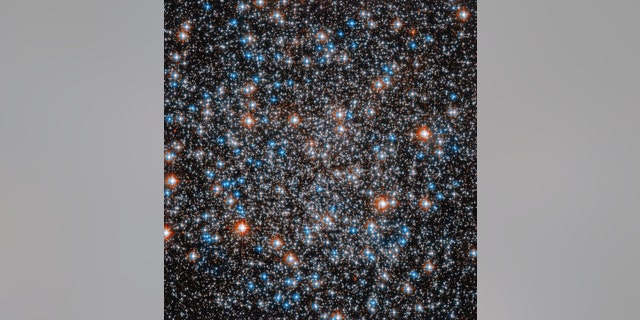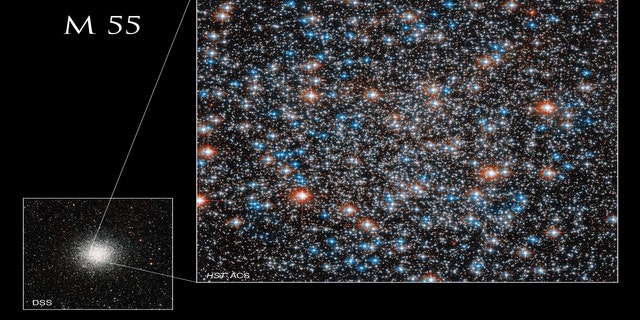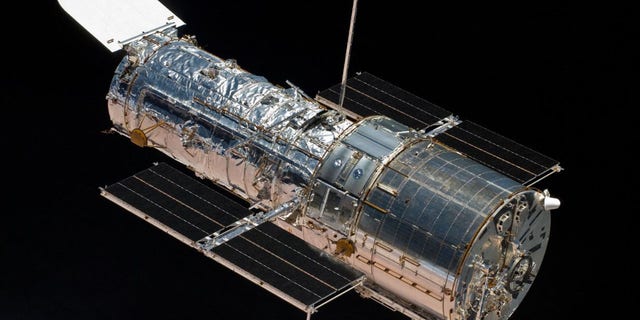A new Hubble Space Telescope image shows Messier 55, also known as M55, about 20,000 light-years away.
The loosely concentrated globular star cluster is large and bright, but lacks a dense core and many of its stars are faint.
It is difficult to observe in non-optimal conditions – even when it was first spotted in 1752 by French astronomer Charles Messier.
It took until 1778 for him to catalog M55.
WEBB TELESCOPE CAPTURES STUNNING IMAGE OF STAR ON CUSP OF SUPERNOVA 15K LIGHT-YEARS AWAY

This image shows just a portion of M55, the cluster as a whole appears spherical because the stars’ intense gravitational attraction pulls them together. Hubble’s clear view above Earth’s atmosphere resolves individual stars in this cluster. Ground-based telescopes can also resolve individual stars in M55, but fewer stars are visible. (Credits: NASA, ESA, A. Sarajedini (Florida Atlantic University), and M. Libralato (STScI, ESA, JWST); Image Processing: Gladys Kober)
Although only a portion of the globular cluster appears in the image, the cluster stretches about 100 light-years in diameter.
The cluster as a whole appears spherical, because the stars’ intense gravitational attraction pulls them together.
While the view is hampered by a thicker layer of atmosphere, water vapor and light pollution for northern observers, the telescope’s view resolves individual stars in this cluster.

The smaller, ground-based image (lower left) taken by the Digital Sky Survey illustrates the area of Messier 55 that Hubble observed. (Credits: NASA, ESA, A. Sarajedini (Florida Atlantic University), M. Libralato (STScI, ESA, JWST), and Digital Sky Survey; Image Processing: Gladys Kober)
NASA SEES ACTIVE VENUS VOLCANO FOR FIRST TIME EVER
Ground-based telescopes can also resolve individual stars in M55, but fewer stars are visible.
While M55 contains an estimated 100,000 stars with 55 variable stars, even in skies with low light pollution and viewed with binoculars the cluster will appear as a round hazy patch.

An astronaut aboard the space shuttle Atlantis captured this image of the Hubble Space Telescope on May 19, 2009. (NASA)
CLICK TO GET THE FOX NEWS APP
“Small telescopes can begin to resolve individual stars in M55, while larger aperture telescopes will pick out low magnitude stars easily,” said NASA.
The star cluster is found in the southern part of the constellation Sagittarius.
